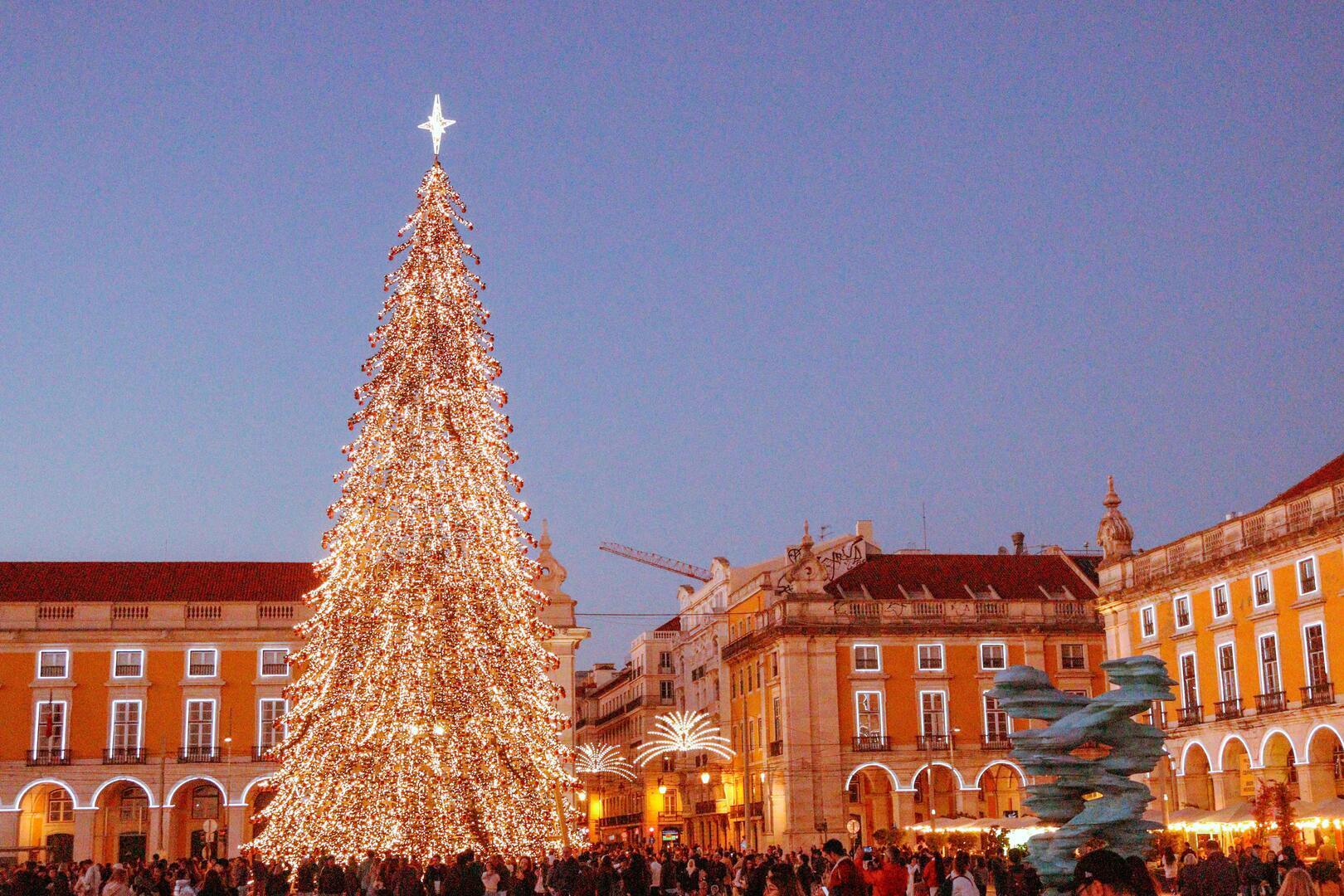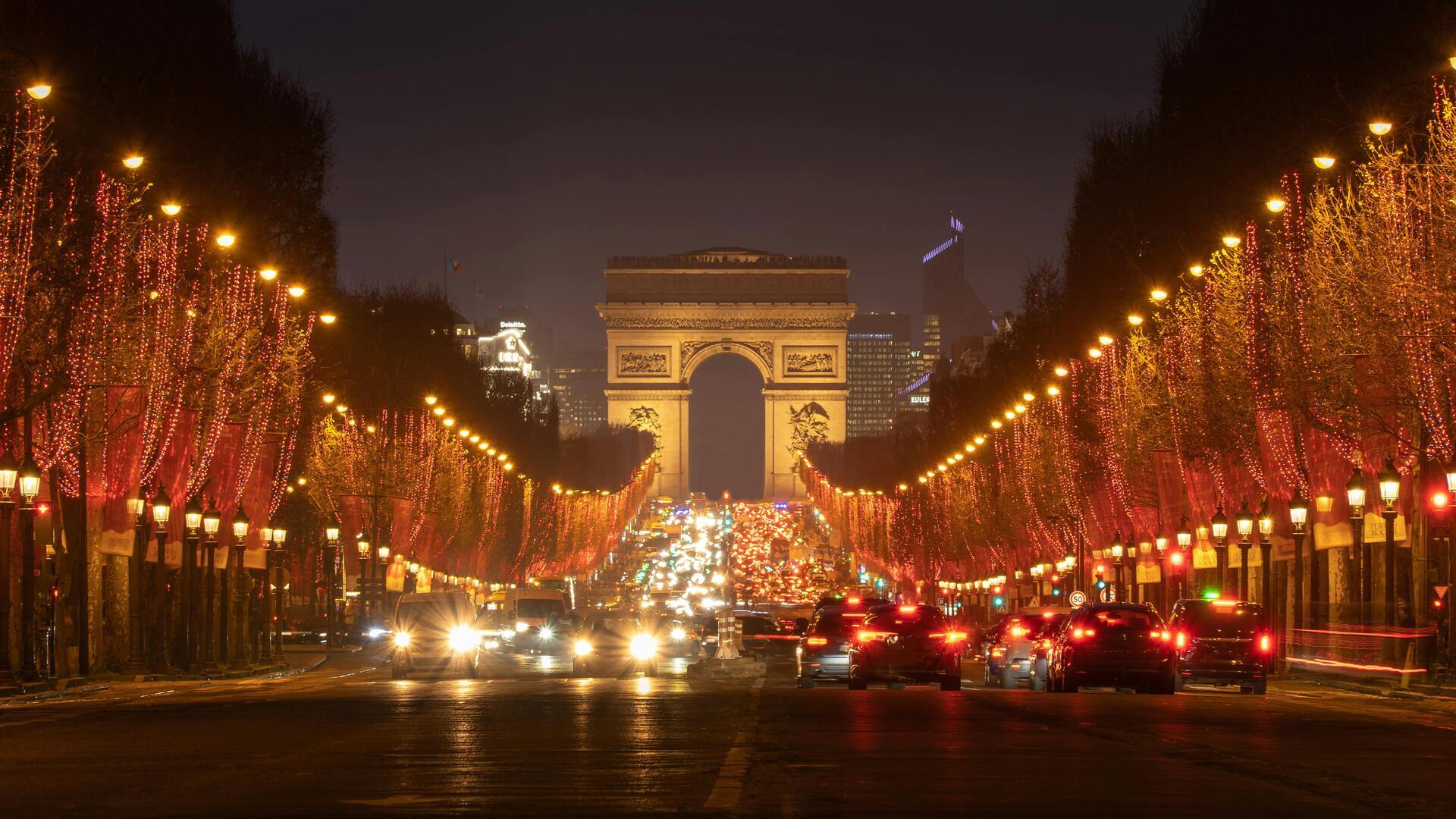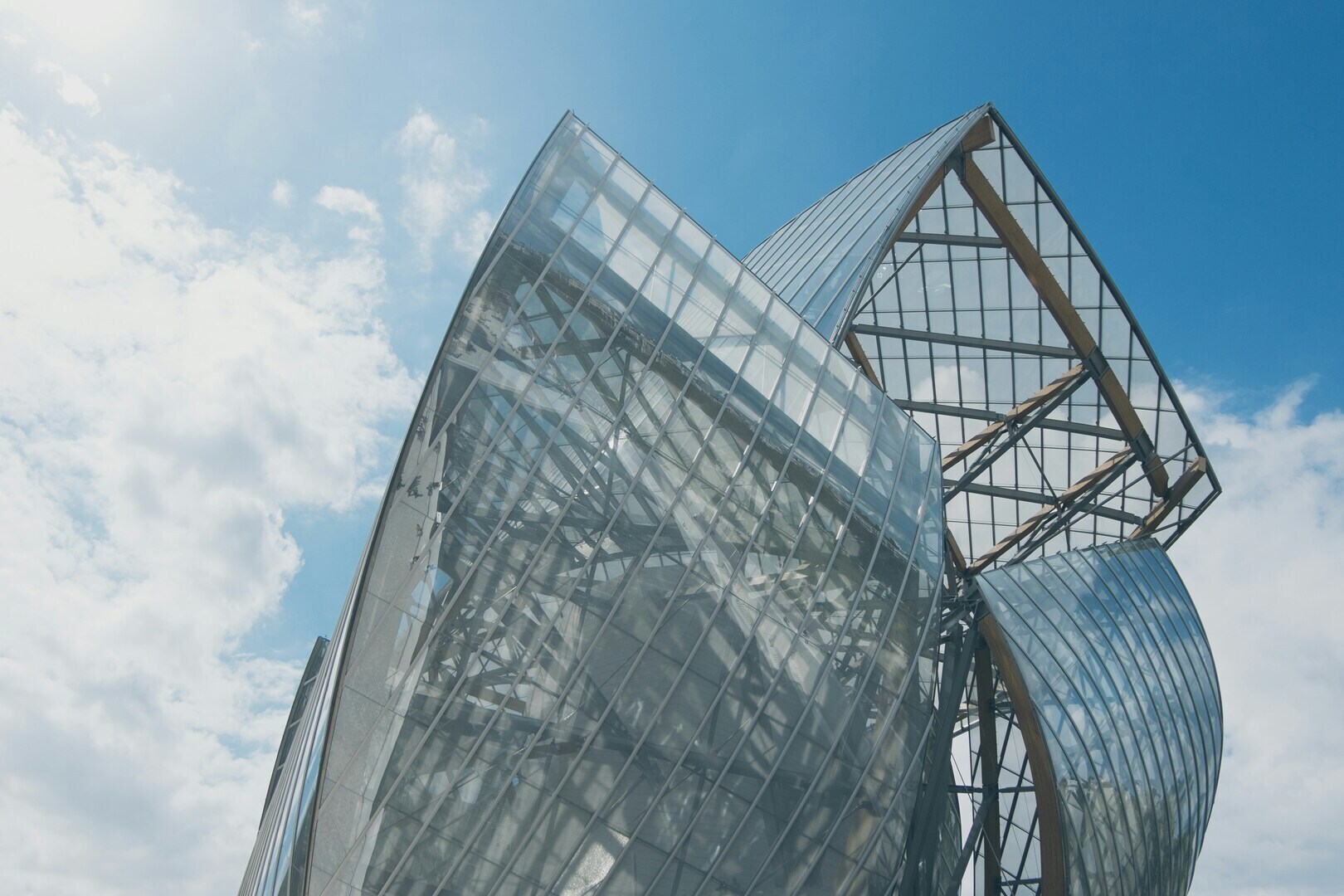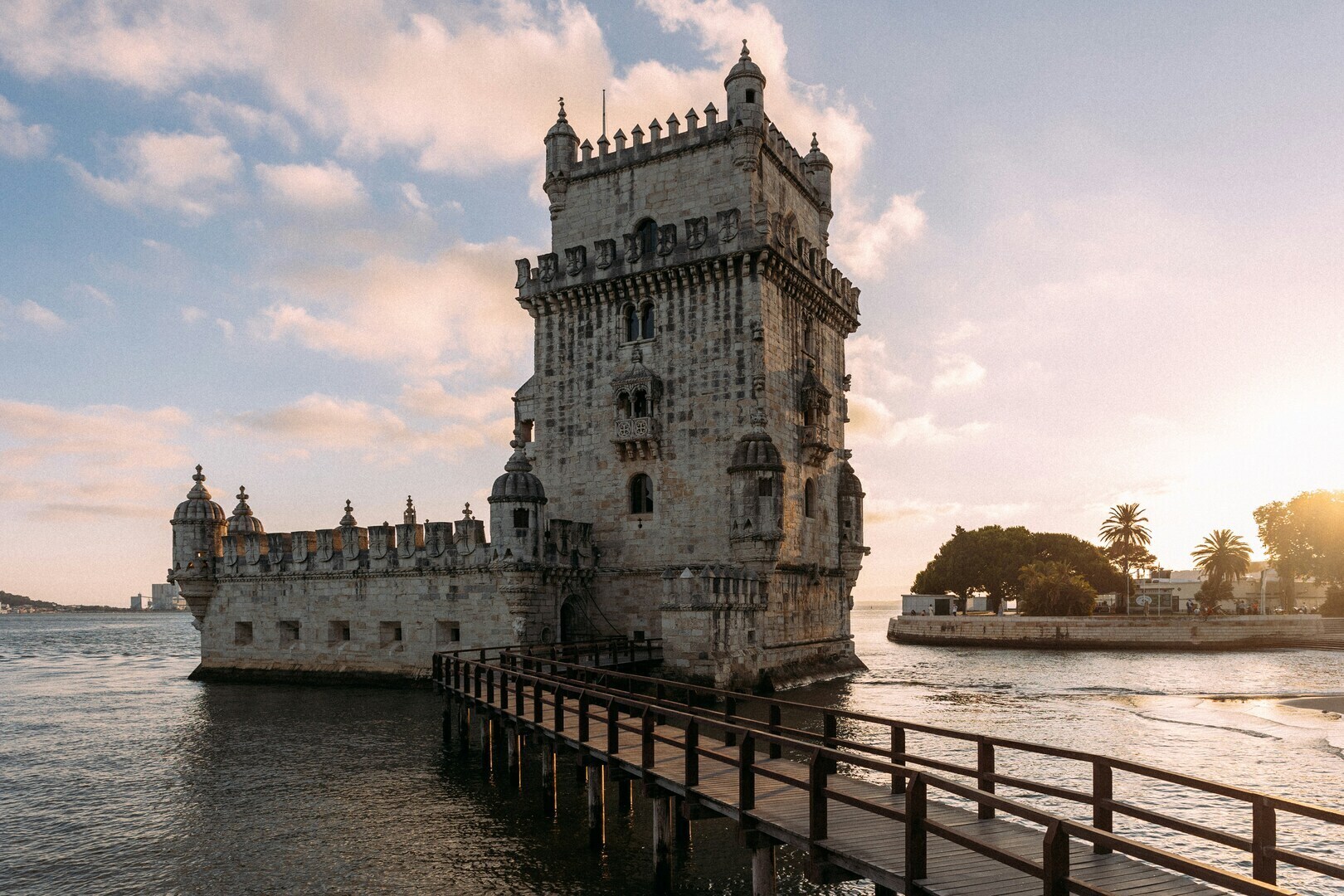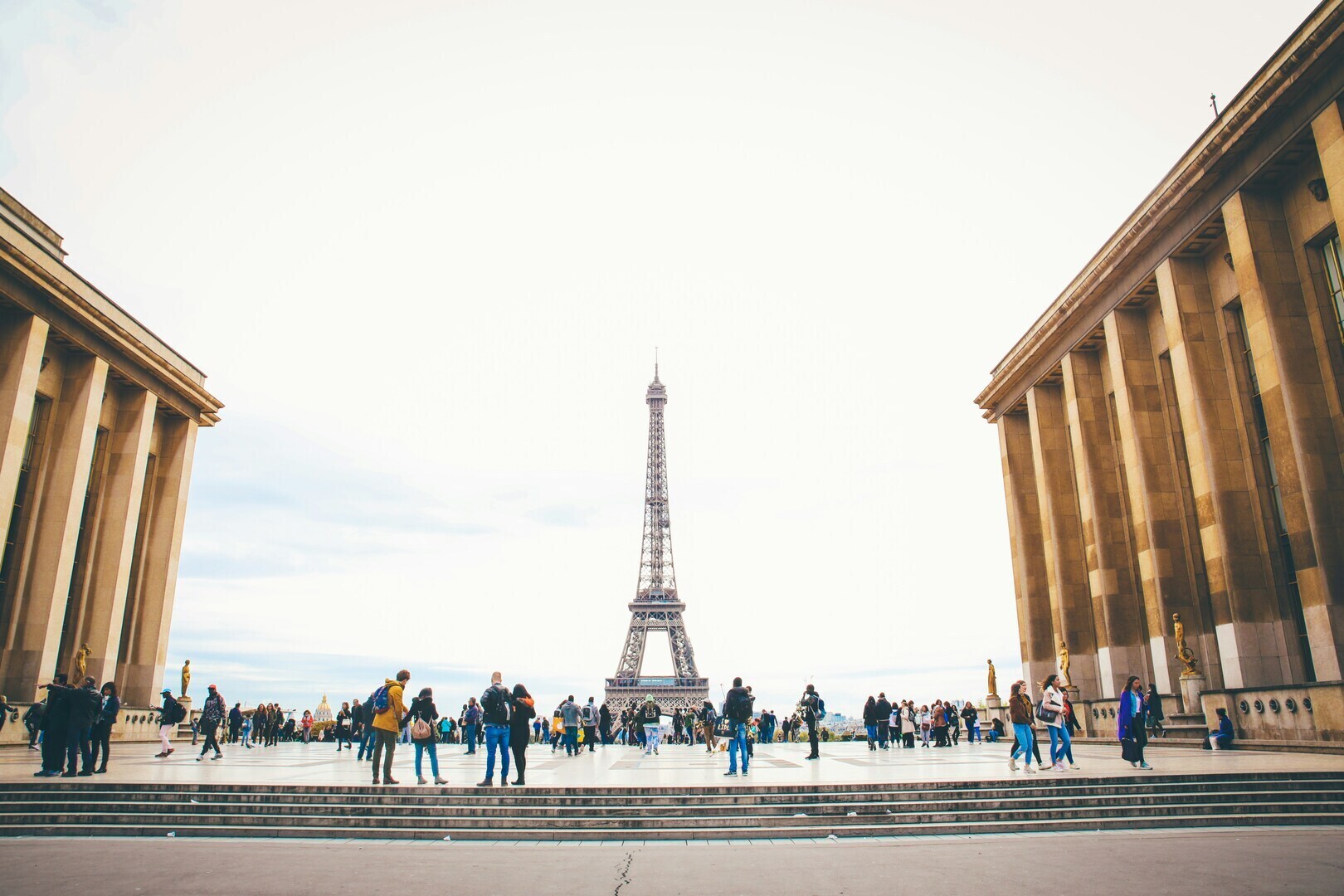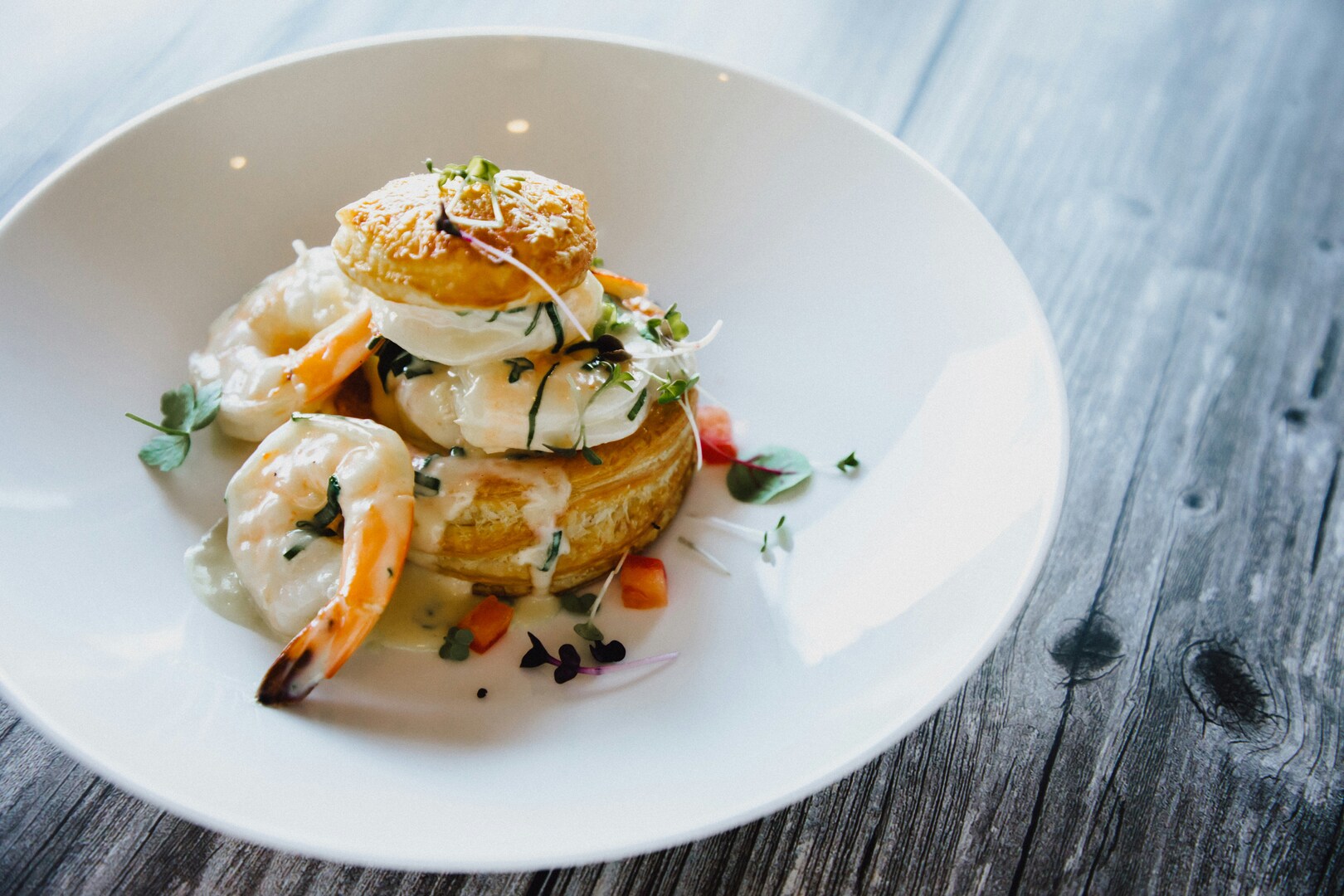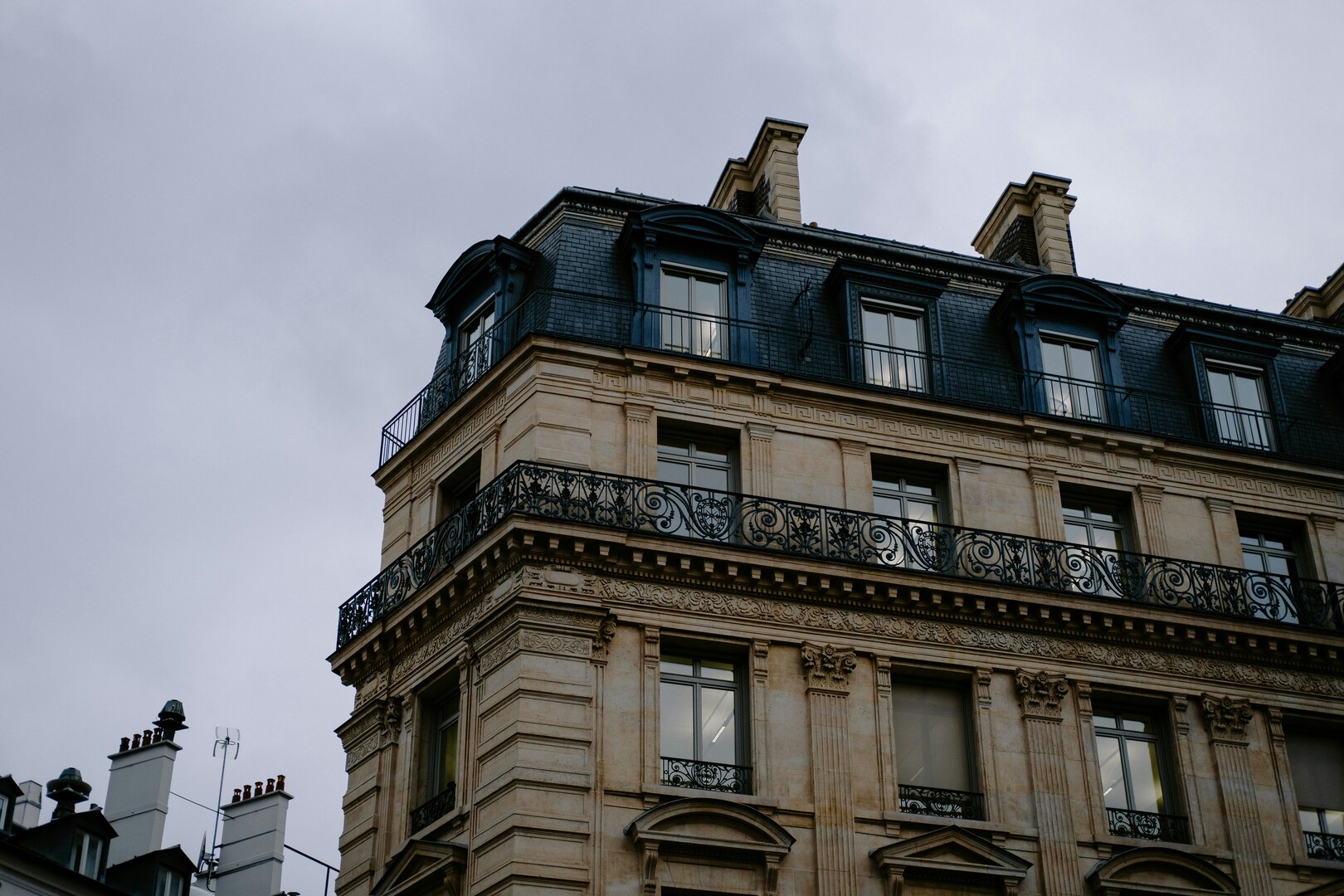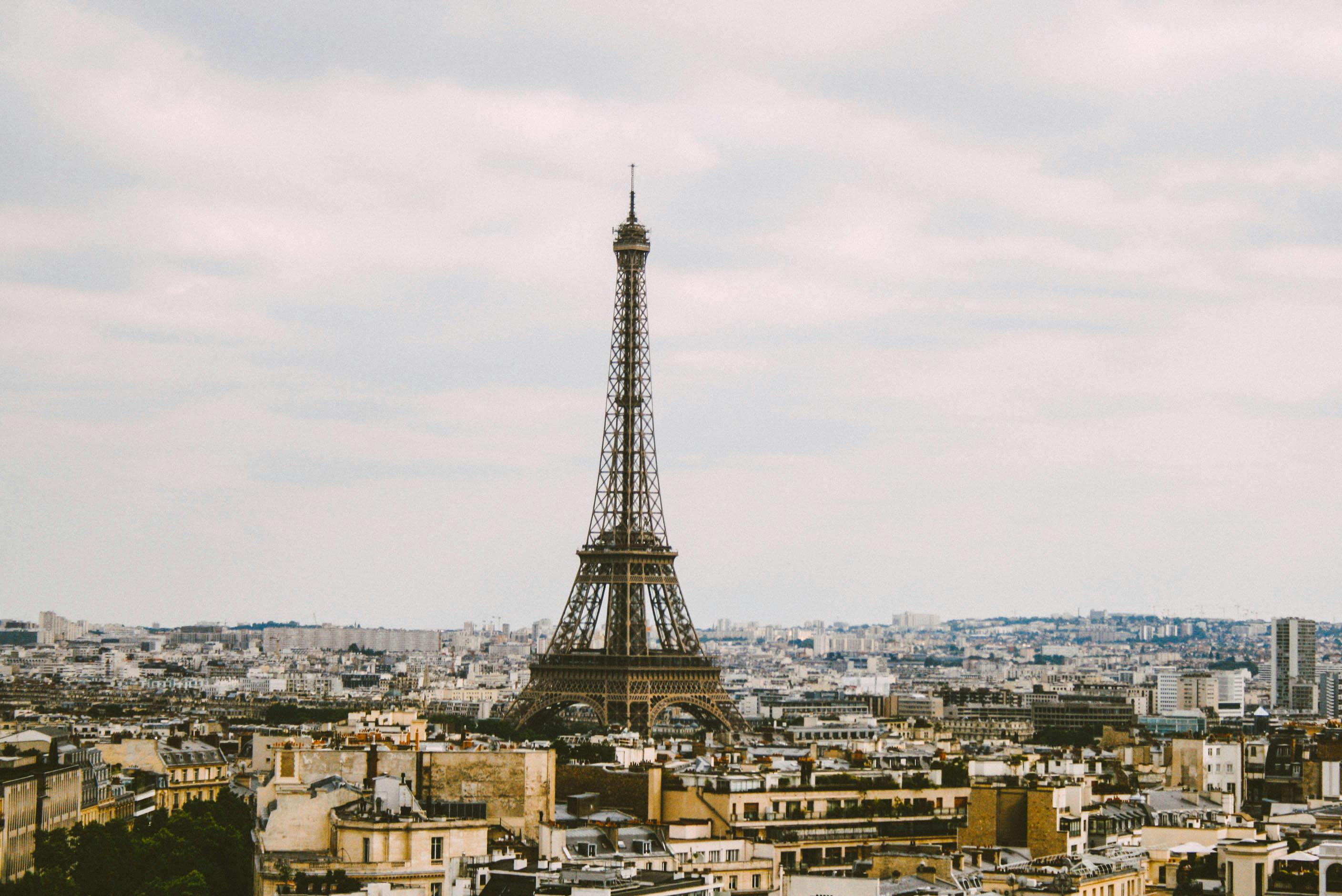
The Eiffel Tower: Paris's Iron Lady Unveiled
Rising 330 meters above the Champ de Mars, the Eiffel Tower has defined Paris for over 135 years. What began as a controversial temporary exhibit for the 1889 World's Fair became the city's most recognizable symbol—a feat of engineering that transformed into an enduring emblem of human ambition and French ingenuity. Today, nearly seven million visitors ascend its iron lattice annually, drawn by panoramic views and the singular experience of standing inside one of the world's most photographed structures.
From Sketch to Skyline
The tower owes its existence to a challenge: how to mark the centennial of the French Revolution with something unforgettable. Engineer Gustave Eiffel and his team answered with a design both audacious and precise—an openwork iron tower that would soar higher than any structure yet built. Construction began in January 1887, and within just 26 months, the tallest man-made structure in the world stood complete.
The engineering was revolutionary. More than 18,000 iron components, held together by 2.5 million rivets, formed a lattice both strong and airy. The design minimized wind resistance while maximizing structural integrity—a marvel that silenced early critics who had decried the project as a monstrous eyesore. By the time the tower opened on March 31, 1889, public opinion had shifted from skepticism to awe.
Key Dates:
- January 28, 1887 – Construction begins
- March 31, 1889 – Official inauguration
- May 15, 1889 – Opens to the public during the Exposition Universelle
- 1930 – Loses "tallest structure" title to the Chrysler Building
The Numbers Behind the Icon
Understanding the Eiffel Tower means appreciating its physical audacity. At 330 meters (1,083 feet) with its antenna, the structure held the title of world's tallest for 41 years. Its iron framework weighs approximately 10,100 tons, yet the pressure it exerts on the ground is equivalent to that of a person sitting in a chair—a testament to the elegance of its engineering.
Three levels welcome visitors: the first at 57 meters, the second at 115 meters, and the summit at 276 meters. Each offers a distinct perspective. The second floor is often considered ideal—high enough for sweeping vistas, close enough to discern landmarks like the Arc de Triomphe, Sacré-Cœur, and the Seine's graceful bends. The summit, meanwhile, offers that rare sensation of floating above one of Europe's grandest cities.
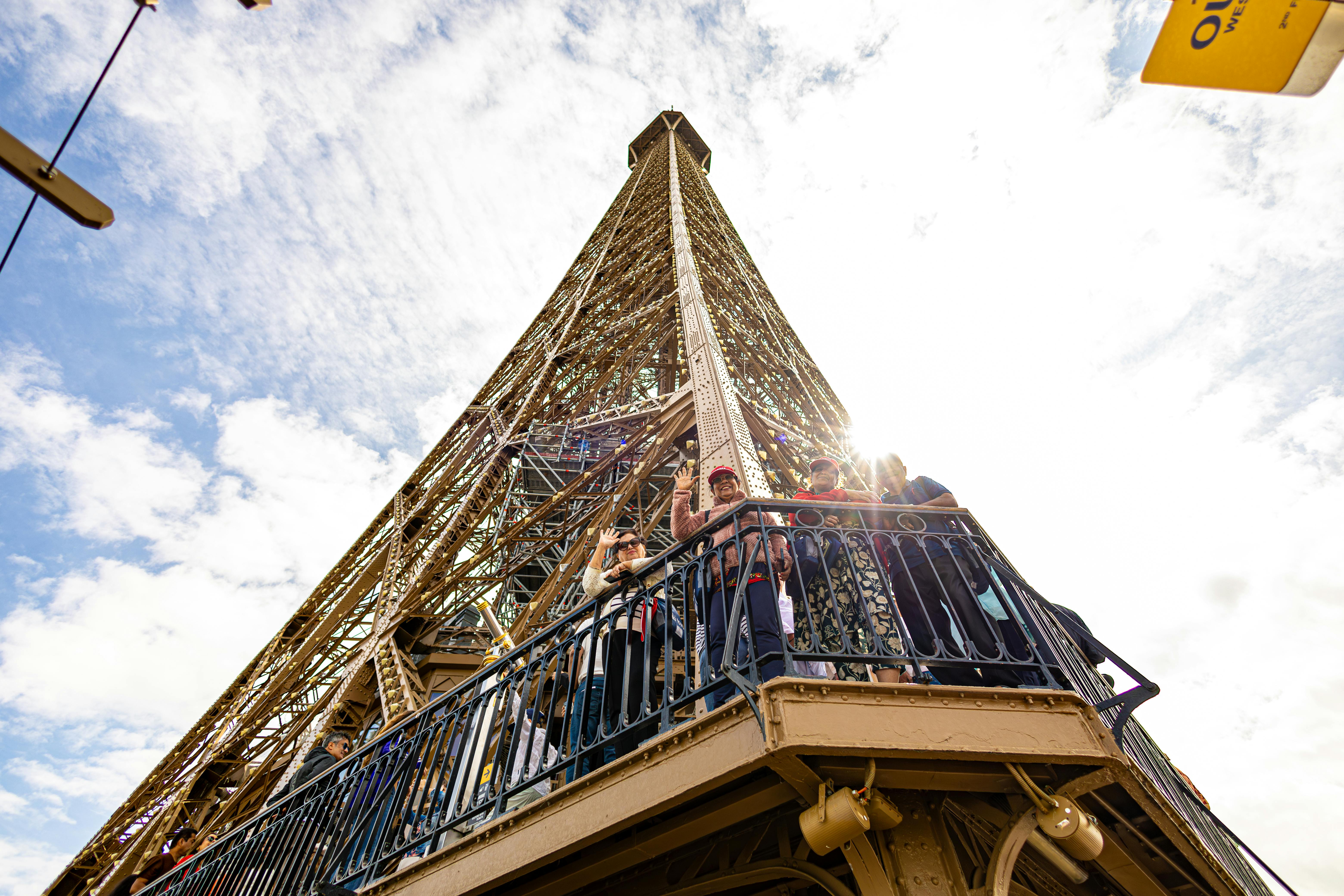
A Living Monument
The Eiffel Tower was never meant to be permanent. Designed for a 20-year permit, it survived demolition thanks to its usefulness—first as a radiotelegraph station, later as a broadcast antenna. This functional evolution kept the tower relevant, transforming it from temporary spectacle to indispensable fixture.
Over the decades, the tower has hosted its share of memorable moments. It's been climbed by daredevils, scaled by elephants (in 1948), and even "married" by a woman who changed her surname to Eiffel. During both World Wars, it served strategic purposes; the French cut its elevator cables in 1940 to prevent Nazi officers from raising a swastika at the summit. More recently, major renovations have modernized facilities while preserving historical character—new glass floors on the first level, improved lighting, and updated elevators that blend technology with period aesthetics.
"I ought to be jealous of the tower. She is more famous than I am." — Gustave Eiffel
How to Experience the Tower
Visiting the Eiffel Tower is less about ticking a box and more about choosing how you want to engage with it. Climbing the stairs offers an intimate, physical connection to the structure—you feel the iron lattice around you, watch the city expand with each flight, and earn the view. Taking the elevator, meanwhile, delivers swift, effortless access and allows you to focus entirely on the experience of height and panorama.
Timing matters. Early morning visits offer softer light and thinner crowds. Evening ascents reward you with the "City of Light" in full luminous glory—the tower's own golden illumination system sparkles for five minutes every hour after dusk, a moment that never fails to enchant.
Guided experiences add narrative depth. With a knowledgeable local, the tower becomes more than a viewpoint—it's a storytelling device, a lens through which to understand Parisian history, architecture, and culture.
A Traveler's Itinerary
Approaching the Eiffel Tower from the Trocadéro Gardens offers the classic frontal view, framed by fountains and open sky. Arrive early to watch the city wake, then cross the Pont d'Iéna bridge to reach the tower's base. The sheer scale becomes apparent only when you stand beneath it, craning your neck to follow the iron lacework upward.
After your ascent, the surrounding Champ de Mars invites a leisurely stroll—perfect for processing what you've just seen. Nearby, the Trocadéro and Invalides offer further exploration, while riverside paths along the Seine provide context for the tower's place in the city's larger tapestry.
If you're weaving the tower into a broader Paris itinerary, consider pairing it with contrasting experiences: intimate Montmartre streets after monumental views, or a museum visit that brings you back to ground-level human scale. The tower functions as both anchor and launching point—a geographic and symbolic center from which to explore the city.
Experience This Attraction With Our Tours
One Journey offers three distinct ways to encounter the Eiffel Tower, each shaped by how you prefer to travel.
Eiffel Tower By Climbing is for those who want to feel the structure, not just see it. Your guide leads you up the stairs to the second level, sharing stories of engineering triumphs and cultural controversies as the city expands around you. A Summit Concierge facilitates access to the top level when available—no extra charge, just attentive service designed to make your visit seamless.
Eiffel Tower By Elevator delivers elegance and ease. Glide up in comfort while your expert guide provides rich historical context and points out landmarks from above. This experience suits travelers who value depth without physical exertion—ideal for families, those with mobility considerations, or anyone who simply prefers to save their energy for other adventures.
For a comprehensive Parisian immersion, the Full Day Tour with Eiffel Tower, Metro, and Montmartre combines the tower with transit mastery and neighborhood exploration. You'll ride the elevator to the second floor, learn to navigate Paris's metro like a local, then discover Montmartre's artistic soul—all in a single, thoughtfully paced day. It's the perfect introduction for first-time visitors or anyone wanting to see multiple facets of Paris with expert guidance.
Is It Worth Visiting?
In a word: yes. The Eiffel Tower has become iconic for good reason—it delivers on its promise. The views are genuinely spectacular, the engineering remains impressive, and the experience of being inside such a symbol resonates in ways that photos never quite capture. Whether you're a first-time visitor or returning after years away, the tower rewards your time and attention.
Traveler's Questions
How long should I plan for an Eiffel Tower visit?
Budget 2–3 hours minimum. This allows time for security, ascent, exploration of multiple levels, and unhurried enjoyment of the views. Guided tours streamline logistics and enrich the experience.
What's the difference between the second floor and the summit?
The second floor (115 meters) offers optimal viewing conditions—you're high enough for panoramic vistas yet close enough to identify landmarks. The summit (276 meters) provides ultimate height and bragging rights, though details below become less distinct. Many find the second floor the sweet spot.
Should I climb the stairs or take the elevator?
Climbing offers a more intimate, physical connection to the structure and typically shorter queues. The elevator provides speed and ease. Both are worthwhile; the choice depends on your fitness level and how you prefer to experience architecture.
When is the best time to visit?
Early morning (shortly after opening) and late evening offer smaller crowds and dramatic light. Sunset visits reward you with daytime and nighttime perspectives in one ascent, though these time slots book quickly.
Do I need to book in advance?
Absolutely. Same-day tickets are often unavailable, especially during peak season. Booking ahead—or joining a guided tour that includes entry—ensures you won't miss this essential Paris experience.
For personalized guidance, seamless access, and insider perspective on experiencing the Eiffel Tower and greater Paris, contact our Tour Concierge at support@onejourneytours.com.

